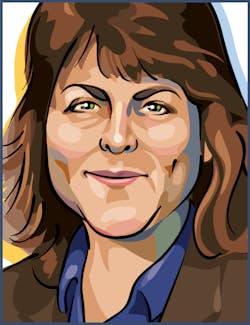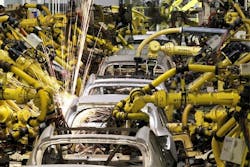
The overwhelming sentiment of photonics industry executives participating in the Executive Panel at the 2014 Lasers & Photonics Marketplace Seminar was positive regarding opportunities in our industry for 2014 and beyond (see my previous blog entry). And while that sentiment was largely echoed in the executive panel on February 5 at SPIE Photonics West 2014 (the official name is "Executive Perspectives on the World of Optics and Photonics"), the panel discussions did express some outlying issues of concern for some of the companies not necessarily playing in "niche" or focused-technology areas such as lasers.
Because the discussion at the Laser Marketplace Seminar was primarily about lasers, it wasn't surprising that the executives from Trumpf, NKT, and Coherent were quite positive about 2014. After all, the laser markets are forecasted to grow 6% in 2014 to $9.3 billion dollars according to our Annual Laser Market Review & Forecast. But at the SPIE Photonics West executive panel, which included executives from Optimax, Excelitas, IDEX, Jenoptik, Newport, Trumpf, and Daylight Solutions, there were concerns about the possibly not-too-distant future regarding company staffing, commoditization, the cyclical nature of some business sectors, and how photonics may "disrupt" the workforce by displacing employees through increasing automation and productivity.
Indeed, Jenoptik's executive VP of optical systems Dirk Rothweiler said that staffing has proven challenging in recent years. Especially considering the emphasis on biomedical optics, many more experienced optical technicians and researchers are desired that also have biomedical experience—a difficult blend of capabilities considering how new photonics is to many biomedical applications. Daylight Solutions CEO Tim Day said that commoditization will also prove challenging for many companies playing in more-established sectors—something that happens in any industry (like telecom) as it matures. While niche players have no commoditization concerns, those in some sectors—like the cyclical semiconductor business (something that keeps Excelitas' CEO David Nislick up at night) or the currently down-trending military markets—have significant concerns going into 2014.
And yet, despite these noted concerns, none were more ominous than the statements from Newport's senior VP of the photonics group Dennis Werth, who pointed out that the debt issues that brought us into recession in 2008 were still evident in the worldwide economies. Werth is also concerned that while photonics is indeed increasing productivity and enabling automation in countless industries, it is also displacing the worker. In essence, he wondered just what all of us were going to do when there weren't enough jobs to go around; i.e., technology is disrupting society.
Werth is not alone. In June 2013, the MIT Technology Review published an article entitled "How Technology is Destroying Jobs". MIT Sloan School of Management professor Erik Brynjolfsson says that median income is failing to rise even as the gross domestic product soars. "It's the great paradox of our era," he says. "Productivity is at record levels, innovation has never been faster, and yet at the same time, we have a falling median income and we have fewer jobs. People are falling behind because technology is advancing so fast and our skills and organizations aren't keeping up." Apparently, technology was feared as far back as the mid 1700s as depicted in this mural below showing rioters, who feared their jobs were in danger, of breaking in the destroy a loom while its inventor John Kay is being smuggled to safety (see http://en.wikipedia.org/wiki/The_Manchester_Murals).
I'm a personal fan of the Internet and the capabilities of lasers and fiber optics in allowing me to work at home, but the MIT article points out that Internet technologies like artificial intelligence, big data, and improved analytics—made possible by cheap computing power and storage capacity—are automating many routine tasks, erasing countless traditional blue-collar jobs. In the image below, for example, where have all the people gone?
About the Author

Gail Overton
Senior Editor (2004-2020)
Gail has more than 30 years of engineering, marketing, product management, and editorial experience in the photonics and optical communications industry. Before joining the staff at Laser Focus World in 2004, she held many product management and product marketing roles in the fiber-optics industry, most notably at Hughes (El Segundo, CA), GTE Labs (Waltham, MA), Corning (Corning, NY), Photon Kinetics (Beaverton, OR), and Newport Corporation (Irvine, CA). During her marketing career, Gail published articles in WDM Solutions and Sensors magazine and traveled internationally to conduct product and sales training. Gail received her BS degree in physics, with an emphasis in optics, from San Diego State University in San Diego, CA in May 1986.

